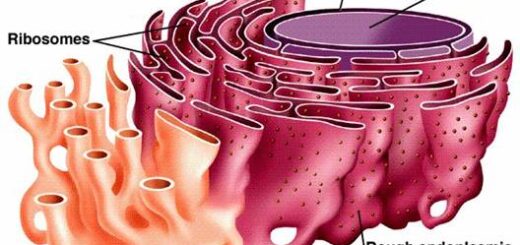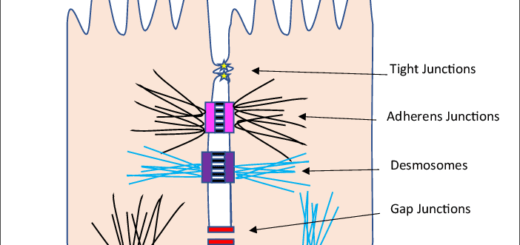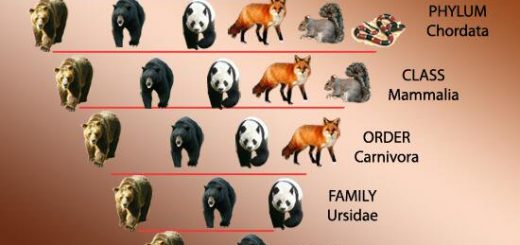Cell proliferation, mechanisms of Cell Death, types and sources of stem cells
Early development is characterized by the rapid proliferation of embryonic cells, which then differentiate to produce the many specialized types of cells that make up the tissues and organs of multicellular animals. As cells differentiate, their rate of proliferation usually decreases, and many cells in adult animals are arrested in the G0 stage of the cell cycle.
Cell proliferation in adults
Cell proliferation is carefully balanced with cell death to maintain a constant number of cells in adult tissues and organs. Somatic cells in the adult can be grouped into three general categories with respect to cell proliferation:
Static cell population: These are non-dividing permanent cells, thus they would not be replaced if injured or lost. They leave the cell cycle to perform a specialized function. Static cells include cardiac muscle fibers and neurons.
Stable cell population: These are quiescent cells that do not usually divide. They are considered to be in the G0 phase but be they may be stimulated to divide by appropriate signals as injury, thus their renewal occurs by duplication of existing cells. They include smooth muscle fibers and the epithelial cells of most internal organs such as the liver and kidney.
Labile cell population: These are fully differentiated cells that do not themselves proliferate. instead, their continuous renewal is via the proliferation of the less differentiated stem cells. They include all cells that have a short life span as blood cells, epithelial cells of the skin (skin epidermis), and epithelial cells lining the digestive tract.
Cell differentiation
It is the process by which unspecialized cells (as embryonic or regenerative cells) acquire specialized structural and/or functional features that characterize the cells, tissues, or organs of the mature organism.
Stem cells
They are primal cells which are the source, or “stem” for all of the specialized cells that form organs and tissues.
Stem cell possesses two properties:
- Self-renewal: It is the ability of the cell to go through numerous cycles of cell division while maintaining the undifferentiated state.
- Potency: it is the capacity to differentiate into different cell types.
Types of stem cells
Totipotent stem cells
They have the potential to generate all types of cells and tissues and can construct a complete, viable organism. Totipotent stem cells are derived from the cells produced by the first few divisions of the fertilized ovum ( morula cells).
Pluripotent stem cells
They are the descendants of totipotent cells, derived from the inner cell mass of the blastocyst. They can differentiate into more than 220 cell types in the adult body, these are the derivatives of the three primary germ layers, ectoderm, endoderm, and mesoderm. Pluripotent stem cells undergo further specialization into multipotent progenitor cells.
Multipotent stem cells
They can produce cells of a closely-related family. They include the multipotent hematopoietic stem cells that can differentiate into red blood cells, white blood cells, and platelets.
Unipotent cells
They can produce mature cells of a single type but still, have the property of self-renewal which distinguishes them from non-stem cells. They include stem cells in the skin epidermis.
Potential sources of stem cells for clinical application
- Embryonic stem cells are pluripotent stem cells, derived from the blastocyst. ( Limited uses this source is due to the ethical restriction).
- Adult stem cells: most adult stem cells are multipotent that can only produce a limited number of cell types.
- Amniotic fluid stem cells are multipotent stem cells.
- Umbilical cord blood stem cells are considered as pluripotent stem cells.
Cell Death
The normal cells are able to handle normal physiologic demands. If the cell is exposed to severe stresses, it goes into cellular adaptations. When the adaptive response to a stimulus is exceeded, reversible or irreversible cell injury occurs. If the stimulus persists, the cell reaches a “point of no return” and ultimately cell death. There are 2 different mechanisms of cell death, necrosis, and apoptosis.
Necrosis = accidental cell death: it is a pathological process due to various unfavorable factors e.g. hypoxia, radiation, or as a result of pathogens such as viruses.
Morphological features of necrosis
- Damage of the cell membrane with severe cell swelling and cell rupture.
- Denaturation or coagulation of cytoplasmic proteins with the breakdown of cell organelles.
- Inflammation with extensive damage to the surrounding tissue.
Apoptosis = programmed cell death
It is a physiological process controlled by several genes, during which loss of mitochondrial function initiates a cascade of reactions that can set on cell death. Apoptosis occurs in many conditions, including:
- In normal embryonic development as the removal of excess cells that have no function during morphogenesis and for determination of organ size.
- In adults as Hormone-dependent involution of the endometrium during the menstrual cycle, regression of lactating mammary gland after weaning and regression of prostate in old males. Elimination of cells during cell cycle when their DNA damage is beyond repair (Refer to the regulation of cell cycle). Maintaining a constant number of cells in proliferating cell populations such as intestinal crypt epithelium.
Morphological features of apoptosis
- Breakdown of DNA with hypercondensation of nuclear chromatin and its collapse against the nuclear periphery.
- Cell organelles remain apparently normal but become clumped inside the cytoplasm.
- Shrinkage of the cell with membrane blebbing.
- Loss of microvilli and intercellular junctions.
- Change of cell membrane characters without loss of its integrity throughout the entire process.
- Fragmentation of the cell into membrane-enclosed apoptotic bodies that contain fragments of the nucleus, mitochondria, and other organelles. The apoptotic bodies are rapidly-recognized and removed by the phagocytic cells.
Cell division types, Mitosis, Meiosis, Reductional division & Equatorial division
Regulation of the cell cycle, DNA synthesis phase, Interphase & Mitosis
Cytoplasmic organelles, Ribosomes & Endoplasmic reticulum function, structure & definition
Cell Structure, the function of Golgi apparatus, Endosomes & Lysosomes
The function of Cytoplasmic organelles, Mitochondria, Peroxisomes & Cytoskeleton
Structure of Cytoplasm, The function of centrosome & Cytoplasmic inclusions
Nucleus components, function, diagram & classification of chromosomes
Importance of Nucleosides, Nucleotides, Purines, Pyrimidines & Sugars of nucleic acids













